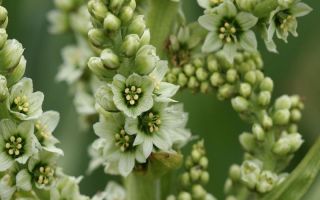Content
- 1 What does Lobel's hellebore look like and where does it grow?
- 2 The chemical composition of hellebore
- 3 Medicinal properties and pharmacological action of hellebore herb
- 4 Methods for the preparation and use of hellebore
- 5 The use of hellebore Lobel in medicine
- 6 Application in cosmetology
- 7 Application in horticulture
- 8 Contraindications
- 9 Harvesting hellebore Lobel
- 10 Conclusion
- 11 Reviews on the use of tincture of hellebore Lobel for alcoholism
Hellebore tincture is a drug with numerous beneficial properties. The drug must be used strictly according to prescriptions, but if the dosages are observed, it improves the condition of the body.
What does Lobel's hellebore look like and where does it grow?
The medicinal tincture is prepared from Lobel's hellebore (Veratrum lobelianum) - a herbaceous perennial up to 160 cm tall. The plant has a vertical shortened root with numerous adventitious processes, a thick, rounded straight stem. The leaves of the hellebore are folded, with pubescence in the lower part, broadly elliptic at the ground and lanceolate in the upper part of the shoot.
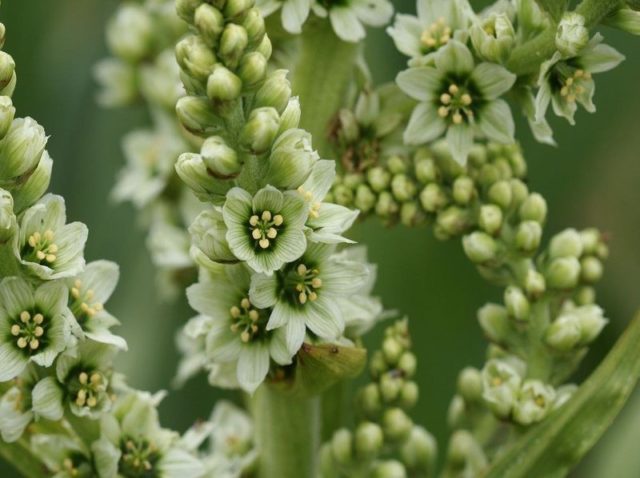
From June to August, the plant blooms with pyramidal apical panicles of a whitish or yellowish hue, consisting of numerous spikelets up to 60 cm long. In August and September, bears fruit in small egg-shaped capsules with brownish flat seeds. For the first time the plant blooms after ten years of life, blooms profusely about once every three years. Chemeritsa is widespread in East Asia, Northern Mongolia and the Mediterranean. Selects usually wet areas - meadows and glades, coniferous forests, river banks.
Where does hellebore grow in Russia
On the territory of Russia, hellebore can be found in Western Siberia, in Transbaikalia, in the European part of the country and in the Caucasus. The plant prefers a warm climate, but feels good in temperate zones.
The chemical composition of hellebore
The roots of hellebore have the most valuable medicinal properties - they are used in the preparation of medicinal products. The underground part of the plant contains:
- alkaloids and amino alcohols;
- iron and potassium;
- tannins and resins;
- magnesium;
- sugars and dyes;
- calcium.
Due to the presence of alkaloids and glycoalkaloids in the composition, hellebore is classified as a poisonous plant. When consumed in excess, it provokes a decrease in pressure and a slowdown in the work of the heart.
Medicinal properties and pharmacological action of hellebore herb
Homemade and pharmaceutical preparations containing hellebore are used to treat many diseases. In particular, the medicinal herb:
- has a strong anthelmintic effect;
- has laxative and diuretic properties;
- reduces blood pressure in hypertension;
- relieves pain in rheumatism, gout and arthritis;
- facilitates the course of neurological ailments;
- benefits from external treatment against fungus;
- helps to get rid of lice and itch mites;
- helps to heal seborrhea and eczema.
A perennial plant relieves itching and local swelling of the epidermis, softens the skin and prevents the development of inflammatory processes.
Methods for the preparation and use of hellebore
On the basis of the roots of the plant, water and alcohol medicines are prepared. Both have strong therapeutic properties and require very careful use.
How to make hellebore tincture
Alcohol tincture of hellebore root is used externally for skin irritations and joint diseases. The tool copes with bacterial processes, disinfects damage and relieves pain. You can buy hellebore tincture 100 ml at the pharmacy, it is also possible to make it at home.
The recipe for the preparation of the drug looks like this:
- dry plant roots are crushed in a volume of 1 g;
- pour raw materials 120 ml of vodka or alcohol, diluted with water up to 40 degrees;
- in a closed container, remove to a dark place for two weeks;
- remove the vessel daily to shake well.
The finished product is passed through folded gauze. Treatment with a tincture of hellebore is carried out as follows - they use a remedy for rubbing sick areas and for compresses up to three times a day.
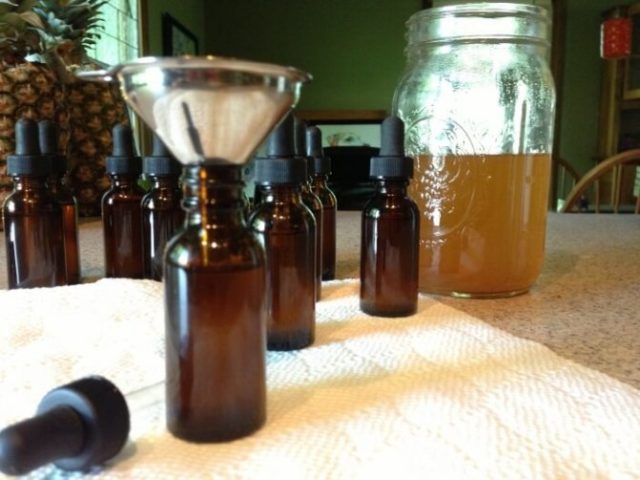
Infusion of hellebore
A water infusion of hellebore has good disinfecting and antifungal properties. Prepare it like this:
- dry medicinal raw materials are ground in a volume of 5 g;
- pour 100 ml of boiling water;
- incubated under a closed lid for an hour;
- passed through cheesecloth.
The infusion is used in the treatment of eczema, head lice, seborrhea and scabies externally. The product is suitable for wiping the skin and for compresses.
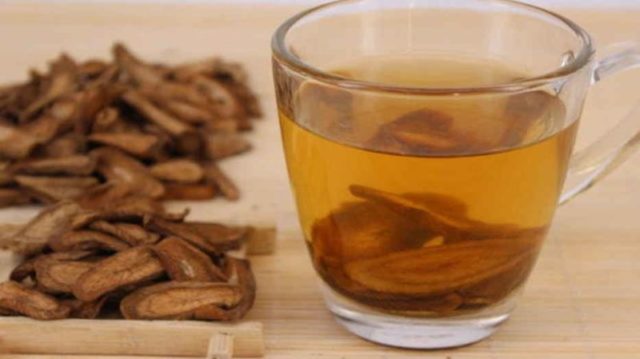
Hellebore broth
For neuralgia, scabies, dislocations and bruises, a decoction from the roots of the plant is beneficial. Traditional medicine offers the following recipe:
- dry roots of the plant are finely chopped in an amount of 10 g;
- pour 250 ml of hot liquid;
- boil in a water bath for half an hour under a lid;
- removed from the stove and insisted for 15 minutes;
- filter.
A warm broth is used to treat the skin and joints. Since the product contains toxic substances, an hour after application, the skin must be cleaned with soap. After contact with the broth, hands are washed immediately.

The use of hellebore Lobel in medicine
In folk medicine, perennial plant-based remedies are used mainly externally. In this case, the toxic substances in the composition do not harm the body, but have a pronounced beneficial effect.
Hellebore tincture from fungus
A perennial plant helps well with fungal infections of the skin and nail plates. Most often, alcohol tincture is used, which is prepared according to the following recipe:
- 1 g of crushed dry roots are poured into 120 ml of high-quality vodka;
- when closed, they are removed in a dark place for insisting for two weeks;
- the finished product is filtered through cheesecloth.
Tincture of hellebore prescription should be used to wipe the affected areas twice a day. You can also make compresses - a cotton pad or gauze is moistened in the preparation and applied to the skin or nail plate for 20 minutes.
How to use and give tincture of hellebore from alcoholism
In minimal quantities, hellebore tincture is used to remove alcohol - it helps to get rid of addiction. The tool is done like this:
- 10 g of dry roots are finely chopped;
- pour 100 ml of good vodka;
- for ten days kept in a cool dark place;
- filter the product through a gauze filter.
The treatment regimen is as follows - two drops of the drug are added to food, water or tea for an alcoholic every day.Moreover, on the first day, the agent must be applied once, on the second - twice, on the third - three times. The maximum daily dosage of hellebore tincture is only 6 drops.
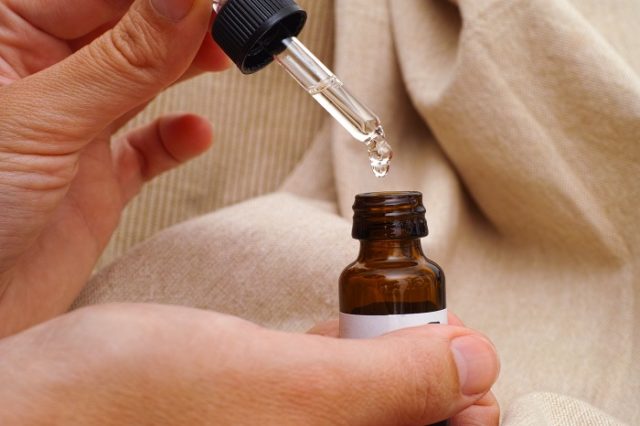
The plant will begin to work after the alcoholic tries to drink alcohol. Previously taken drops will lead to the development of nausea, vomiting, weakness and dizziness. The patient will quickly begin to associate his condition with alcohol consumption and give up the bad habit due to poor health.
Instructions for the use of hellebore tincture for people require treatment secretly from the drinking person. If the patient knows that the nausea and weakness are caused by a drug, then he will not be able to form an aversion to alcohol. It is also important to remember that hellebore tincture should be diluted in soft drinks or in food - it is not added directly to vodka, beer or wine.
Hellebore with inflammation of the tonsils
The anti-inflammatory properties of hellebore help well with inflammation of the tonsils. For medicinal purposes, external applications are made:
- the dry root of the plant is ground into powder;
- make a strip about 40 cm long from ordinary dough;
- sprinkle it generously with flour from the roots of the plant and wrap it around the throat.
From above, the compress must be secured with a bandage. You can keep it for up to eight hours in a row.
Chemeritsa from head lice
Homemade ointment using plant roots helps to get rid of lice. They make it according to this recipe:
- dry hellebore is crushed in a volume of 150 g;
- combined with an equal number of chopped rosemary leaves;
- mix the components with 500 g of pork lard;
- for six hours heated in a water bath over low heat.
The finished product is passed through a sieve to separate the precipitate and cooled. Instructions for using hellebore for humans recommends applying a healing balm to the hair, paying special attention to the roots, and then covering it with a shower cap and a towel on top. The product is left overnight and removed in the morning. You need to repeat the procedure several times a week until the head lice is completely cured.
Hellebore with rheumatism
For joint ailments, it is customary to use an alcoholic tincture of the plant. The recipe looks like this:
- 100 g of crushed root is poured into 1 liter of high-quality vodka or diluted alcohol;
- in a dark cabinet, the product is kept for 15 days;
- after the expiration of the period, filtered and poured into another container.
It is necessary to use hellebore tincture to rub the joints for pain and inflammation or for compresses - they are applied for 30-50 minutes.

Application in cosmetology
In home cosmetology, the beneficial properties of hellebore and its tinctures are used to improve the condition of the hair. The herbal preparation not only helps to remove lice, but also regulates the oiliness of the scalp, makes curls silky and eliminates dandruff. The beneficial substances in the composition of the product stimulate blood circulation and are responsible for good nutrition of the hair follicles.
Usually, to care for curls, the tincture is simply rubbed into the head shortly before hygiene procedures. Before the first use of the product, an allergic reaction test is carried out. A couple of drops of the drug should be applied to the bend of the elbow and see if redness and itching appear.
Application in horticulture
Chemeritsa benefits at their summer cottage, it is used for pest control. The plant helps to expel silkworms, sawfly caterpillars, aphids and the Colorado potato beetle from fruit and berry crops.
To get rid of pests, prepare the following remedy:
- 40 g of dry plant roots are crushed;
- pour 10 liters of water;
- when closed, insist for five hours;
- filter the infusion;
- before use, stir 40 g of soap chips in the product.
The resulting drug is sprayed with garden and vegetable garden crops. To reliably get rid of insects, it is necessary to perform the treatment several times in a row at intervals of a week.
Contraindications
The benefits and harms of hellebore are closely related to each other; if used incorrectly, the plant can cause great damage to the body. The herb contains many dangerous alkaloids that disrupt the functioning of the central nervous system.
It is impossible to use decoctions and tinctures based on hellebore:
- with severe cardiovascular ailments;
- with chronic liver damage;
- with individual intolerance;
- with infectious skin diseases.
It is strictly forbidden to take remedies from a medicinal plant for pregnant women and nursing mothers, as well as children and adolescents up to 18 years old. It is necessary to use drugs in strict accordance with safe doses of hellebore tincture, exceeding them can lead to poisoning, weakness, fainting and even cardiac arrest. Do not allow funds to get on the mucous membranes of the eyes, nose and genitals.
Harvesting hellebore Lobel
Harvesting of raw material for hellebore Lobel is carried out in the fall in mid or late October. Since the roots of a perennial herb are used for medicinal purposes, it is necessary to wait until the end of the growing season. During this period, the maximum of valuable substances accumulates in the underground part of the plant.
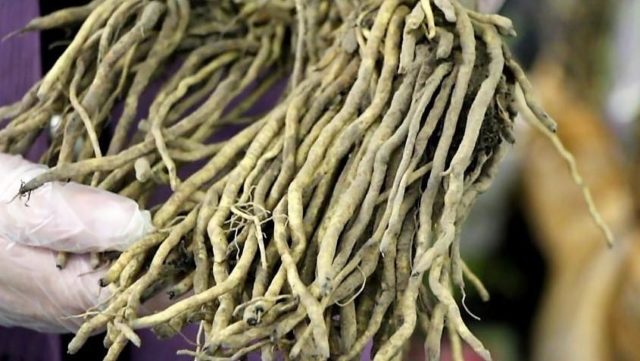
To obtain the roots, hellebore is dug out of the soil and the main rod is cut with a sharp knife. Upon arrival home, the dug roots are washed with cold water and divided into small pieces. The raw materials are laid out on a baking sheet or tray and dried in a warm place with good ventilation, after which they are placed in paper bags and put away for storage. You need to keep hellebore in a dark place with low humidity levels, away from food and seasonings. The herb, if all conditions are met, retains its medicinal properties for up to three years.
Conclusion
Hellebore tincture is a fairly toxic but effective remedy that can be beneficial in small dosages. The drug is used to treat alcohol dependence and to remove fungi and parasites. When using, contraindications must be taken into account.
Reviews on the use of tincture of hellebore Lobel for alcoholism

